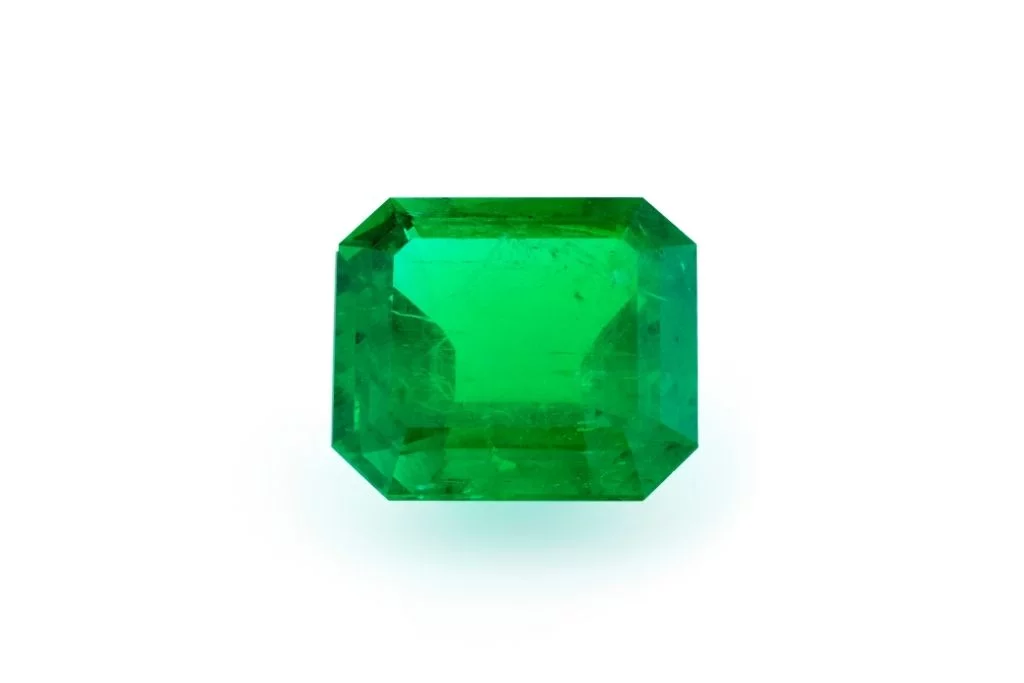Color of the Biron Emerald
The Biron Emerald is renowned for its vibrant green hue, which can range from a deep, rich forest green to a brighter, more vivid shade. This color is one of the most distinctive features of the crystal, often described as a “true emerald green” that captivates the eye. The intensity and saturation of the color can vary depending on the specific specimen, but it consistently maintains a beautiful green tone that is highly prized in the gemstone world.
Structure and Composition
Structurally, the Biron Emerald is a beryllium aluminium silicate, sharing the same chemical composition as natural emeralds. However, it is created through a hydrothermal process that mimics the natural formation of emeralds. This results in a crystal structure that is nearly identical to that of natural emeralds, with a hexagonal crystal system. The synthetic nature of Biron Emeralds allows for greater control over the growth process, resulting in fewer inclusions and a generally cleaner appearance compared to natural emeralds.
Notable Physical Characteristics
One of the most remarkable aspects of Biron Emeralds is their exceptional clarity. Unlike many natural emeralds, which often contain numerous inclusions, Biron Emeralds typically have fewer visible imperfections. This clarity enhances their overall brilliance and allows light to pass through the crystal more easily, creating a stunning visual effect. Additionally, Biron Emeralds often exhibit excellent transparency, further contributing to their allure.
Unique Features
What truly sets Biron Emeralds apart is their consistent quality and ethical sourcing. As lab-created gems, they offer a sustainable and conflict-free alternative to natural emeralds. Moreover, the controlled environment in which they are grown allows for the production of larger crystals with fewer flaws, making them ideal for use in high-end jewelry. The combination of their ethical production, consistent quality, and stunning appearance makes Biron Emeralds a unique and desirable choice in the world of gemstones.
Historical and Cultural Significance of the Biron Emerald
The Biron Emerald, also known as synthetic emerald, holds a unique place in gemstone history. Developed in the 1960s by Pierre Gilson, it represented a significant advancement in synthetic gem creation. While not as historically revered as natural emeralds, Biron Emeralds have gained popularity for their consistent quality and ethical sourcing, appealing to environmentally conscious consumers.
Metaphysical Associations
Despite being lab-created, Biron Emeralds are believed by some to possess similar metaphysical properties to natural emeralds. They are associated with love, compassion, and harmony. Many crystal healers suggest that Biron Emeralds can promote emotional balance, enhance intuition, and stimulate mental clarity. Some also attribute properties of growth, renewal, and prosperity to these synthetic gems.
Common Uses and Applications
Biron Emeralds are widely used in jewelry-making, offering a more affordable alternative to natural emeralds without compromising on color or clarity. They are popular in engagement rings, pendants, and earrings. In alternative healing practices, Biron Emeralds are sometimes used in crystal grids or as meditation tools. Some practitioners incorporate them into energy healing sessions, placing them on the heart chakra to promote emotional healing and balance.
Benefits and Modern Applications
The consistent quality of Biron Emeralds makes them ideal for industrial and technological applications where natural emeralds might be too variable or expensive. They are used in high-precision optical instruments and lasers. In the realm of personal well-being, Biron Emeralds are believed to aid in stress relief, improve focus, and enhance overall vitality. Some people keep these synthetic gems in their work environment to promote creativity and success.

